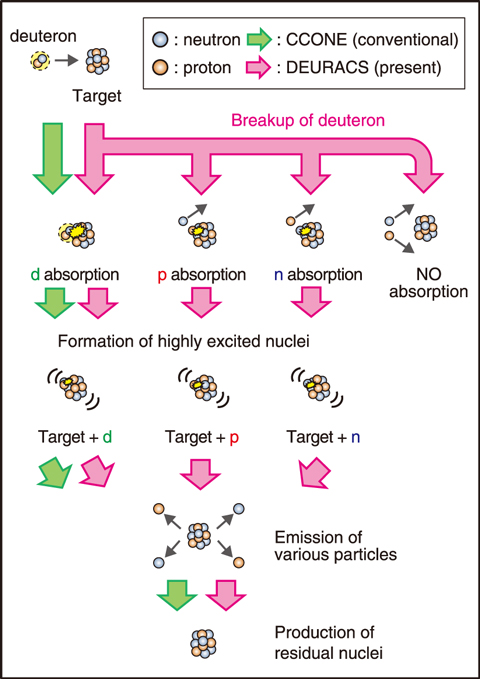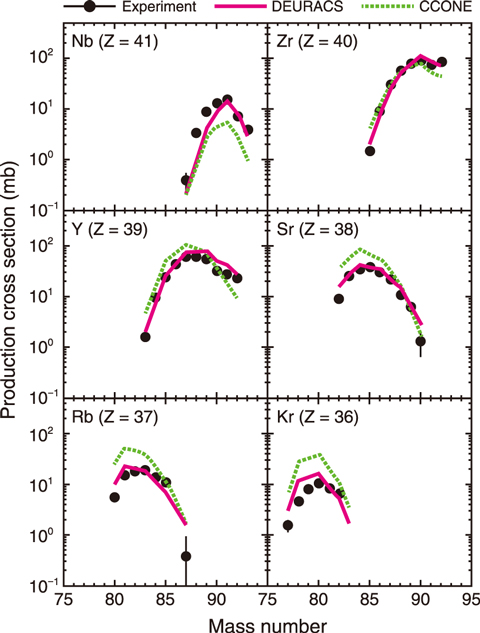
Fig.4-2 Schematic of the calculation in DEURACS

Fig.4-3 Isotopic production cross sections for the 93Zr+d reaction at 210 MeV
As produced radionuclides with long half-lives require long-term management, it is strongly desired to transmute them into stable or short-lived ones. Spallation has been recommended for the transmutation of long-lived fission products (LLFPs). Furthermore, using deuteron as an incident particle, rather than a proton, has been suggested to improve the efficiency of transmutation.
Investigating the feasibility of using a deuteron primary beam for transmutation requires accurate cross section data of deuteron-induced reactions over a wide range of target mass numbers and incident deuteron energies. However, the amount and scope of available experimental data of deuteron-induced reactions have been limited. Reliable theoretical models thus are required to provide the necessary data.
We have thus been developing a computational system for deuteron-induced reactions, called DEURACS. In the present study, DEURACS has been improved and used to calculate deuteron-induced spallation reactions on typical LLFPs.As illustrated in Fig.4-2, three composite nuclei types can be formed by the absorption of a neutron or proton produced by the breakup of the incident deuteron or by the absorption of the incident deuteron itself. Whereas prior nucleon-induced reaction models such as CCONE have only considered deuteron absorption, DEURACS considers all three absorption types.
The calculated and experimental isotopic production cross sections for the 93Zr+d reaction are shown in Fig.4-3 for an incident deuteron energy of 210 MeV. For comparison, the results calculated with the CCONE code, in which the deuteron breakup processes are not taken into account, are also shown. DEURACS more accurately reproduced the experimental data across the wide mass number range studied. The DEURACS-calculated values for 107Pd+d reactions at incident deuteron energies of 236 and 392 MeV were also in good agreement.
The framework of the improved DEURACS was thus deemed applicable to deuteron-induced spallation reactions on LLFPs. Furthermore, it was demonstrated that considering the breakup processes is essential in the accurate prediction of deuteron-induced spallation reactions.
Research and development on a transmutation system using a deuteron primary beam would make great progress by the present work. The developed model and results presented here are expected contribute to further work involving deuteron-induced reactions, such as the production of medical radioisotopes and evaluating radioactivity in deuteron accelerator facilities.
This work was partly supported by the ImPACT Program of Council for Science, Technology and Innovation (CSTI), Cabinet Office, Government of Japan.
<Previous: 4 Nuclear Science and Engineering Research | Next: 4-2>